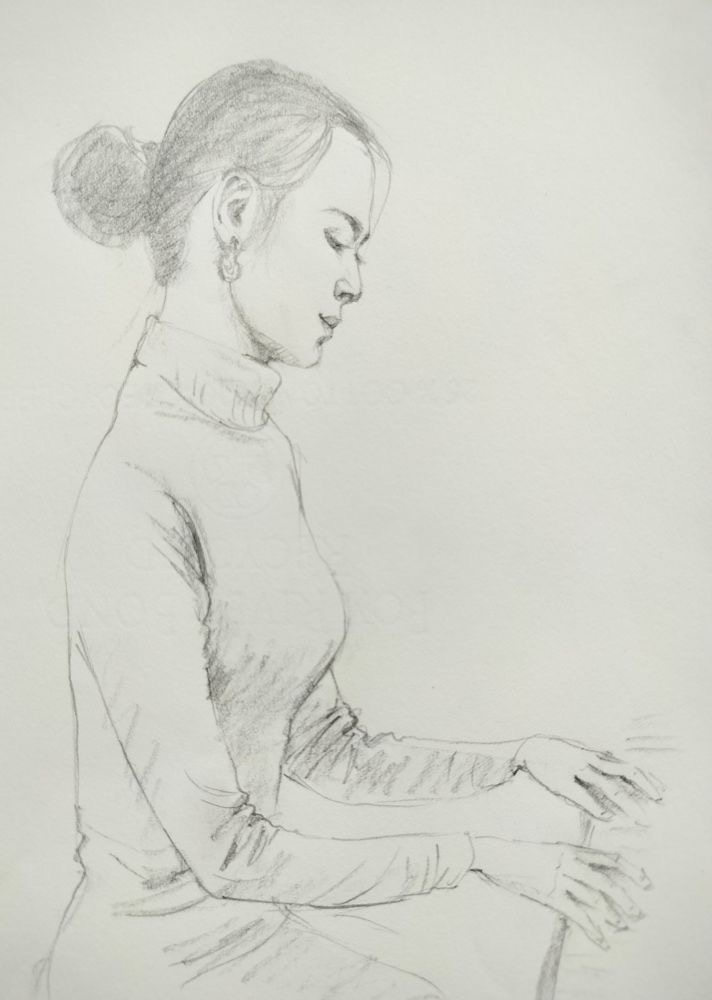哈梅
音乐天地《逍遥自在》演唱:我
“春风来,花儿开,我在等待你回来…”
====================
贝多芬的《悲怆奏鸣曲》 Pathétique 2nd Mvt. - Adagio Cantabile
弹奏:我(2-16-2022录的)
没练熟,录的当天花了1-2小时突击了一下,为了哀悼一位突然逝世的歌友。
有几处犹豫,不是很明显;但最后部分的开始有一个音弹错,很突兀,是个败笔,虽然立即纠正了。
我的文学城电台链接:https://www.wenxuecity.com/radio/post.php?act=post_view&postid=

【高光时刻】《逍遥自在》《悲怆奏鸣曲》 - 哈梅 - ♀ ![]()
![]() (2184 bytes) (745 reads) 04/20/2024 22:03:02
(2184 bytes) (745 reads) 04/20/2024 22:03:02 ![]() (13)
(13)
• 赞!真是个美才女 - gzlady - ♀ ![]()
![]() (0 bytes) (1 reads) 04/20/2024 22:07:19
(0 bytes) (1 reads) 04/20/2024 22:07:19
• 谢谢广姐过奖!:) - 哈梅 - ♀ ![]()
![]() (0 bytes) (0 reads) 04/20/2024 22:10:05
(0 bytes) (0 reads) 04/20/2024 22:10:05
• 熟悉的君歌,唱的好听,弹奏的也好,双赞哈梅的好弹唱。 - 醒来已经是黄昏 - ♂ ![]()
![]() (0 bytes) (1 reads) 04/20/2024 22:09:33
(0 bytes) (1 reads) 04/20/2024 22:09:33
• 谢谢昏哥美言鼓励!:) - 哈梅 - ♀ ![]()
![]() (0 bytes) (0 reads) 04/20/2024 22:10:48
(0 bytes) (0 reads) 04/20/2024 22:10:48
• 邓歌,哈妹唱得别有一番风味,,, - 李大牙 - ♂ ![]()
![]() (66 bytes) (7 reads) 04/20/2024 22:11:00
(66 bytes) (7 reads) 04/20/2024 22:11:00
• 哈哈哈,谢谢大牙!我把谱翻得噼里啪啦的,都怪编谱的图省事。:) - 哈梅 - ♀ ![]()
![]() (0 bytes) (2 reads) 04/20/2024 22:13:33
(0 bytes) (2 reads) 04/20/2024 22:13:33
• 美才女 - 好吃狗 - ♀ ![]()
![]() (0 bytes) (1 reads) 04/20/2024 22:49:10
(0 bytes) (1 reads) 04/20/2024 22:49:10
• 谢谢好班谬赞!:) - 哈梅 - ♀ ![]()
![]() (0 bytes) (2 reads) 04/20/2024 23:21:04
(0 bytes) (2 reads) 04/20/2024 23:21:04
• 赞赞赞赞 - 青柏 - ♀ ![]()
![]() (0 bytes) (2 reads) 04/20/2024 22:56:58
(0 bytes) (2 reads) 04/20/2024 22:56:58
• 谢谢大美女鼓励!:) - 哈梅 - ♀ ![]()
![]() (0 bytes) (0 reads) 04/20/2024 23:22:15
(0 bytes) (0 reads) 04/20/2024 23:22:15
• 多才多艺! 赞赞赞! - 碧蓝天 - ♀ ![]()
![]() (0 bytes) (2 reads) 04/20/2024 23:03:03
(0 bytes) (2 reads) 04/20/2024 23:03:03
• 谢谢蓝班美言鼓励!:) - 哈梅 - ♀ ![]()
![]() (0 bytes) (0 reads) 04/20/2024 23:22:46
(0 bytes) (0 reads) 04/20/2024 23:22:46
• 琴声配画 - dahaiyang - ♂ ![]() (81 bytes) (3 reads) 04/21/2024 06:12:09
(81 bytes) (3 reads) 04/21/2024 06:12:09
• 才看到!谢谢大画家为我画肖像,还真像!:) - 哈梅 - ♀ ![]()
![]() (0 bytes) (0 reads) 04/21/2024 09:48:50
(0 bytes) (0 reads) 04/21/2024 09:48:50
The word “Pathétique” appears in both Tchaikovsky's Symphony No. 6 and Beethoven’s Piano Sonata No. 8, but they are very different works—in instrumentation, period, emotional context, and musical style.
???? 1. Instrumentation & Form
| Feature | Tchaikovsky – Symphony No. 6 “Pathétique” | Beethoven – Sonata No. 8 “Pathétique” |
|---|---|---|
| Type | Symphony | Piano sonata |
| Instrumentation | Full orchestra | Solo piano |
| Structure | 4 movements | 3 movements |
| Duration | ~45 minutes | ~19–20 minutes |
| Composed in | 1893 (Romantic period) | 1798 (Early Classical/Romantic transition) |
???? 2. Emotional Tone and Meaning of “Pathétique”
-
Tchaikovsky’s use of “Pathétique” (from the Russian title “Pateticheskaya”) leans toward deep emotional suffering, tragedy, and fatalism. It’s his final symphony, and he died just days after its premiere, adding mystery and a sense of farewell to the work.
-
Beethoven’s use of “Pathétique” (French for “emotional” or “moving”) was more dramatic than tragic, reflecting heroic struggle and tension, common in early Romantic music. It’s passionate but not necessarily despairing.
???? 3. Thematic and Musical Differences
| Aspect | Tchaikovsky | Beethoven |
|---|---|---|
| Opening | Slow, brooding bassoon solo → Allegro dramatic | Grave slow intro → fiery Allegro |
| Mood | Melancholy, elegiac, emotionally turbulent | Bold, dynamic, stormy, but with clarity |
| Famous Movement | Final movement (Adagio lamentoso – ends in despair) | First movement (Grave – Allegro molto) |
| Ending | Ends quietly, fading into nothing (unusual) | Ends more conventionally |
| Key | B minor | C minor |
???? Listening Tip: What to Notice
-
Tchaikovsky's 6th is emotionally draining, with a waltz in 5/4, a triumphant march (3rd movement), and then a crushingly sad finale. It’s about internal struggle, mourning, and existential weight.
-
Beethoven's Sonata is intensely dramatic, with rhythmic drive and sudden dynamic contrasts. The famous first movement balances pathos and power, showing Beethoven’s early experimentation with emotional intensity.
? Summary:
| Feature | Tchaikovsky's Symphony No. 6 | Beethoven's Sonata No. 8 |
|---|---|---|
| Emotion | Deeply tragic, introspective | Dramatic, heroic |
| Scale | Orchestral, large form | Solo piano, compact form |
| Period | Late Romantic | Early Romantic |
| Impact | A farewell to life | A breakthrough work |




